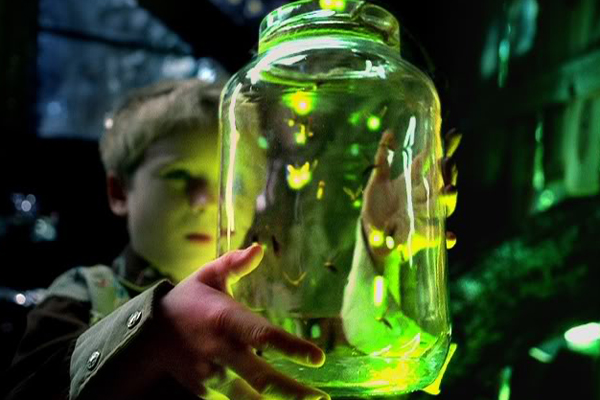ENID, Okla. - One of my all time favorite things growing up was chasing and catching fireflies in a jar. The memories of fireflies sends me instantly back to the days of running around the neighborhoods without a care in the world. The days when we wandered for hours without our parents knowing where we were. We weren't on any schedule and most often lost all track of time.
The hot summer nights beckoned the fireflies from their hiding places and just as the sun went down you'd be able to see their short little bursts of light flickering all over the sky. Fireflies were one of the many mysteries we never understood as kids but we believed they were magical.
Firefly populations are on the decline so it may be harder to find them especially near populated areas. Here are some quick facts about fireflies to help you take the kids on a firefly hunt.
1.) Fireflies are not flies at all. Scientifically, fireflies are classified under Lampyridae, a family of insects within the beetle order Coleoptera, or winged beetles.
2.) Fireflies emit light mostly to attract mates, although they also communicate for other reasons as well.
3.) Firefly lights are the most efficient lights in the world—100% of the energy is emitted as light. Because it produces no heat, scientists refer to firefly lights as “cold lights.”
4.) Fireflies love warm, humid areas and come out in the summertime. Fireflies thrive in forests, fields and marshes near lakes, rivers, ponds, streams and vernal pools. They need a moist environment to survive.
5.) Researchers believe fireflies ore disappearing because of human expansion and development and light pollution. Turning lights off will help attract them.
6.) In the U.S., almost no species of fireflies are found west of Kansas — although there are also warm and humid areas to the west. Nobody is sure why.
7.) Fireflies also love long grass. They're nocturnal, and during the day they spend most of their time on the ground. At night, they crawl to the tops of blades of grass and fly into tree branches to signal for mates.
8.) Catch fireflies using a butterfly net. Place the fireflies you catch into a clear jar with a lid that's been pierced to let in air. You should also place a moistened paper towel inside to keep the air in the jar humid.
9.) Once you have a jar of fireflies, let them go after a day or two. Release them at night when they're most active and able to avoid predators. Keeping them longer, will cause them to die.
10.) In a firefly's tail, you'll find two chemicals: luciferase and luciferin. Luciferin is heat resistant, and it glows under the right conditions. Luciferase is an enzyme that triggers light emission. ATP, a chemical within the firefly's body, converts to energy and initiates the glow.








